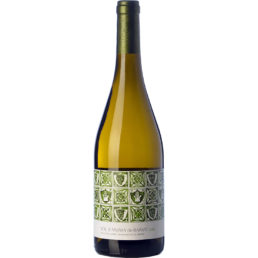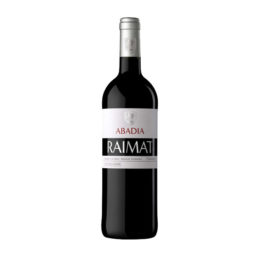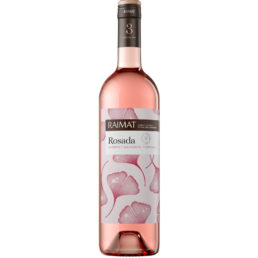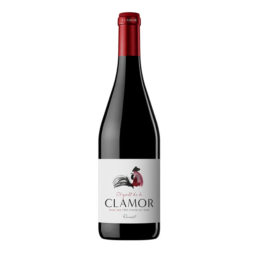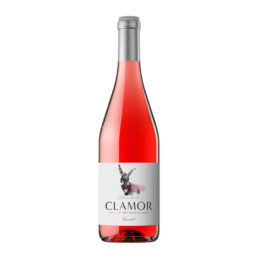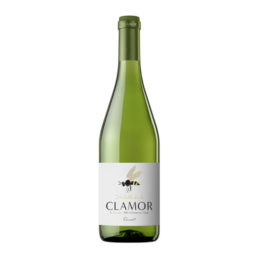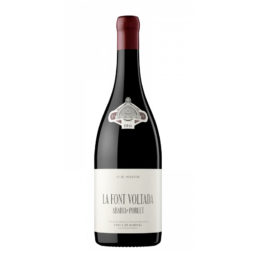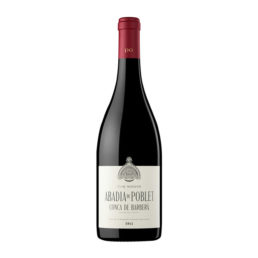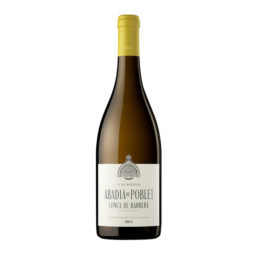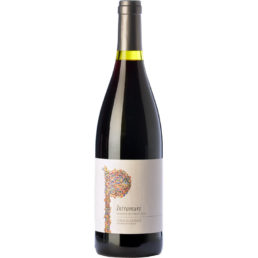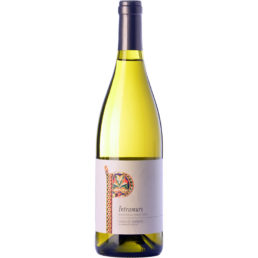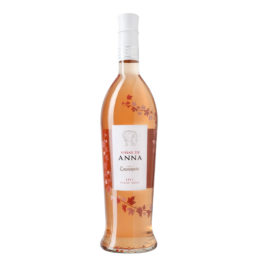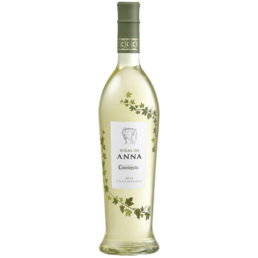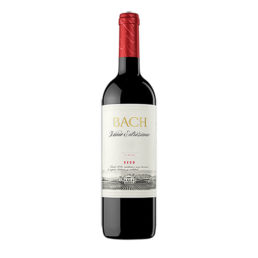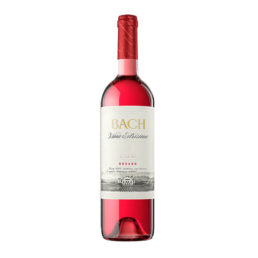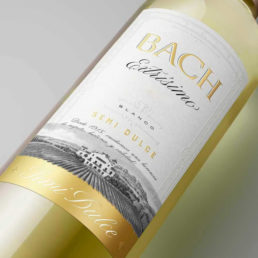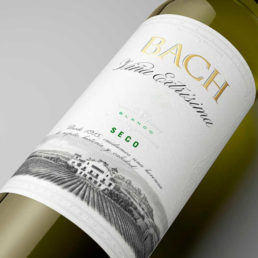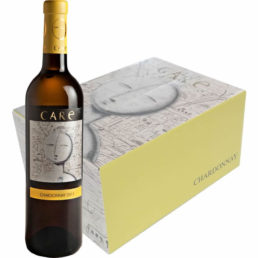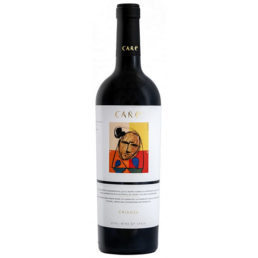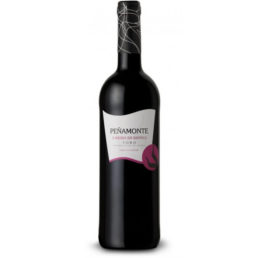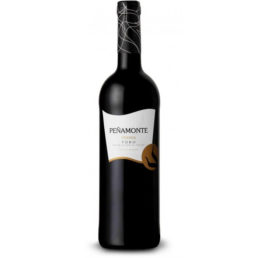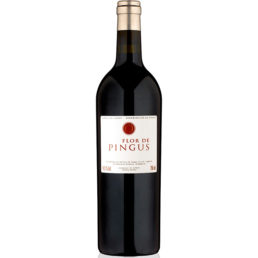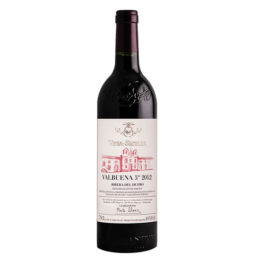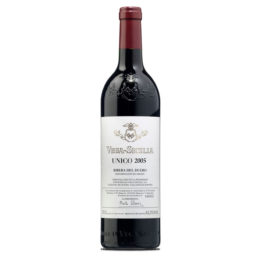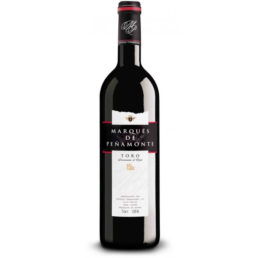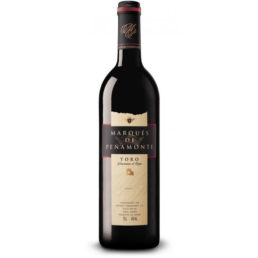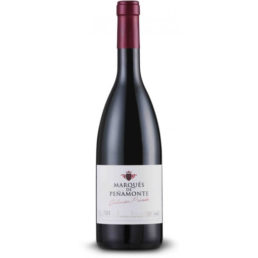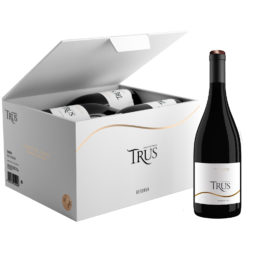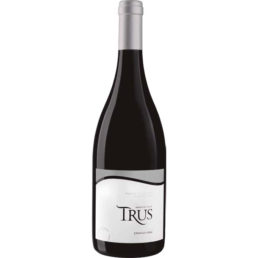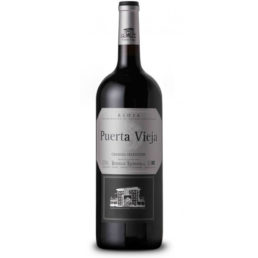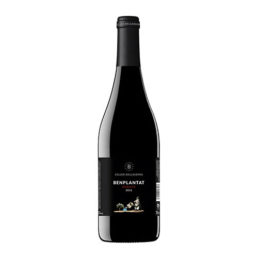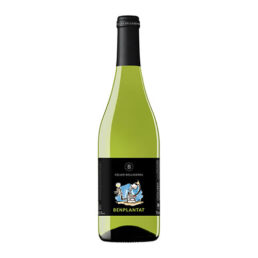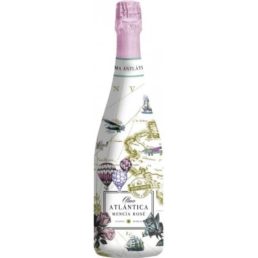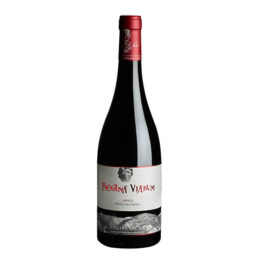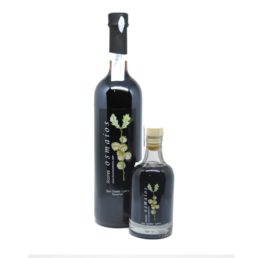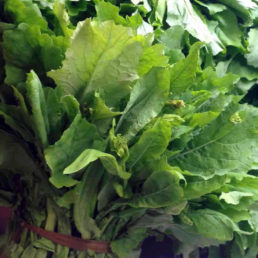Spain
-
Vino Blanco Raimat’s Flight of the Soul
Vol d Ànima, formerly known as Ànima de Raimat, it is the culmination of our first 100 years of history. The tiles that dress up your tag are the same that look in the walls of the castle of Raimat from 1935, after the reform carried out by the architect Rafael Masó. This white wine represents a new style in the house with the purpose of adapting to the new trends, with sustainable viticulture of the varietals that best express the terroir of the winery: Chardonnay and Xarel·lo. From the vintage 2019, Raimat Blanco's Flight of the Soul becomes ecological, betting on biodiversity, balance and respect for the earth.DEVELOPMENT (VINIFICATION)After pressing, the wort is cooled below 10 ºC so that the decanting static was able to preserve its primary aromas. Then, the must fermented at a controlled temperature of 16 ºC during 2 the 3 weeks. The three grape varieties are fermented separately. After the fermentation and clarification processes, the final mixture was made for Vol d'Ànima de Raimat Blanco Ecológico.PAIRINGVol d Ànima de Raimat Blanco is a wine that can pair with a wide range of foods, as can be caps (squid, squid, bravas, spatter, Russian salad, etc.), pasta and rice creamy, white fish and seafood. It is also great with birds. -
Red wine Raimat Abadia
Raimat Abadia is the wine most representative of the history and the essence of Raimat, the brand of wine oldest of the D. Or. Costers del Segre. Inspired by the work and the dedication with which the monks perform their tasks, this red wine reflects the vocation, the patience and the know-how of the Cellar. The first Abbey was drafted in the 1978 and since then, remains the emblem of the winery. DEVELOPMENT (VINIFICATION)It starts with a grape harvest at night to preserve the primary aromas of the fruit. When the grapes reach the cellar, it passes through a heat exchanger that lowers the temperature to 15 ºC, it will keep for 24-48h to make a cold maceration that will provide a wine that is more fruity and vivacious. After fermentará around 25 ºC. When fermentation has finished, sent this wine to stainless steel tanks for malolactic fermentation.PAIRINGRaimat Abadia is a good ally of dishes containing cheeses, vegetables, meats, legumes, or any type of pasta. -
Rosé wine Raimat Pink
In the finca Raimat is common to see the presence of roses in the vineyards. The rose is an ideal companion for the vid, as the roses help to detect early a disease that affects them. Every morning, the petals of all the rosas they refreshed by the dew of the morning giving us the most beautiful awakenings. This wine is a tribute to these facts. Raimat Pink is a wine of pale pink gloss, that is similar to the petals of the first rose of spring. Elaborated with the varieties Cabernet Sauvignon and Tempranillo, for this pink only intended the first must, the more fragile and delicate but at the same time, more elegant, fresh and aromatic. DEVELOPMENT (VINIFICATION)The harvest is performed at night, taking advantage of the lower temperatures and quickly, to preserve the primary aromas. To reach the winery, after de-stemming and once achieved a temperature of 10 ºC, the grapes are sent directly to the press to proceed to the extraction of a very soft. The methodology that we use in Raimat is unusual; the winemaker decides on the basis of the target color what percentage of the flower must be intended to this wine. Then, for this pink, only intended the first must, which is more fragile and delicate but at the same time, more elegant, fresh and aromatic. It, it ferments to 14 ° C to preserve all the aromatic complexity of the two varieties.PAIRINGRaimat Pink is the wine-gastronomic excellence, marries perfectly with blue fish (tuna, salmon or sardines), pasta dishes, pizza; rice, caps, salads vegetable, vegetables, with birds, of dark meat such as quail or pheasant. -
Red wine Raimat Clamor
Cry is the name given to the lower part of the mountain where they grow the vines that produce this wine. Their grapes are developed pink, red and white. A privileged spot of the finca Raimat which gives rise for years, one of the best-known wines of the house.Pairing
Perfect for dishes with cheeses, inlaid, ham, red meat, porcine, roast lamb and vegetables. Also with snails. -
Rosé wine Raimat Clamor
Cry is the name given to the lower part of the mountain where they grow the vines that produce this wine. Their grapes are developed pink, red and white. A privileged spot of the finca Raimat which gives rise for years, one of the best-known wines of the house.Pairing
Pair with vegetables, white meat, rice, soft cheeses and fish. Also with casual dishes such as pizza, fried and pates. -
White wine Raimat Clamor
Cry is the name given to the lower part of the mountain where they grow the vines that produce this wine. Their grapes are developed pink, red and white. A privileged spot of the finca Raimat which gives rise for years, one of the best-known wines of the house.Pairing
A perfect complement to chicken dishes or white meat, fresh salads, Fish, rice and pasta. -
Rosé wine Vineyards of Anna
DEVELOPMENT (VINIFICATION)The harvest is done in the night, taking advantage of the lower temperatures and quickly, to preserve the varietal aromas and prevent oxidation of unwanted. To reach the winery, is performed a pressing immediately after, during 24-48h to make a natural clarification at low temperatures. The winemaker decides on the basis of the target color what percentage of the flower must be intended to this wine, which is more fragile and delicate but at the same time, more elegant, fresh and aromatic. Once clean, the wort, is decanted into a stainless steel tank with cooling system for performing a controlled fermentation between 16-18 ºC. After the alcoholic fermentation, the wines are preserved in tanks, avoiding oxidation, until the time of bottling.PAIRINGVines of Anna Pinot Noir is the wine-gastronomic excellence, that marries with a large amount of dishes to perfection. A perfect complement to dishes that contain fish blue (tuna, salmon or sardines), rice, and pasta. Also Ideal pairing with salads, fruits, vegetables, with birds, of dark meat such as quail or pheasant. Ideal to enjoy by the glass with all kinds of caps. -
White wine Vineyards of Anna
DEVELOPMENT (VINIFICATION)The grapes of the Chardonnay comes from different plots, with different soils and exposures; the purpose is to achieve a mixture with multiple records, we provide texture, body, freshness and golosidad. This differentiation allows us to obtain a wine with exceptional qualities while retaining the expression of the fruit. The grape enters the winery during the night, at low temperatures, to preserve the aromas of the variety and avoid oxidation of unwanted. Is performed a pressing immediate, for after, during 24-48h to make a natural clarification at low temperature. Once clean, the wort, is decanted into a stainless steel tank with cooling system for performing a controlled fermentation between 16-18 ° C. After the alcoholic fermentation, the various tanks of Chardonnay are blended according to indication of the winemaker to get that final mix.PAIRINGVines of Anna Chardonnay is the perfect complement to dishes containing white meat, fish, seafood, rice, and pasta. Also ideal for asian cuisines such as japanese and thai, tempura, and grilled vegetables. -
Red wine Viña Extrísima Masia Bach
Masia Bach was founded early last century by the brothers Pere and Ramón Bach, manufacturers of tissues. They wanted to link the best cotton tradition with viticulture, giving the name of the best cotton “Extrísimo” to the best vineyards where Masia Bach wines historically came from. Council of the winemaker It is recommended its consumption during the year following the harvest. Pairing It is a red wine-cut, the perfect ally for a wide range of dishes: vegetables and meats stewed or grilled, post, fish of firm flesh and fat, such as cod and tuna accompanied with sauces, rice dishes seasoned with meat, mushrooms stir-fried or stewed, sausages and semi-mature cheeses. -
Rosé wine Viña extrísima pink dry Masia Bach
Masia Bach was founded early last century by the brothers Pere and Ramón Bach, manufacturers of tissues. They wanted to link the best cotton tradition with viticulture, giving the name of the best cotton "Extrísimo" to the best vineyards where Masia Bach wines historically came from. Winemaker's advice The wine is expected to reach its maximum fullness during the first year, keeping in good condition one year plus. Store in a dry place without exposure to direct sunlight. Pairing Ideal to accompany a multitude of dishes; from sausages, rice and pasta, until fish flesh as firm as monkfish, cod, tuna and white meat. -
White wine Extrísimo semi-Masia Bach
Masia Bach was founded early last century by the brothers Pere and Ramón Bach, manufacturers of tissues. They wanted to link the best cotton tradition with viticulture, giving the name of the best cotton “Extrísimo” to the best vineyards where Masia Bach wines historically came from. Wine that gave fame to the winery. His soft palate and slightly sweet-it marked an era and with it a precedent of sweet wines of calidad.Su fruitiness has been enhanced by his stay in the barrel. Council of the winemaker It is expected to reach its maximum evolution in two years, staying in good condition for 5 years old. Pairing Perfect addition for baking, foie gras and blue cheeses. It is also a good accompaniment to snacks, seafood and fish stews. -
White wine Extrísimo seco Masia Bach
Masia Bach was founded early last century by the brothers Pere and Ramón Bach, manufacturers of tissues. They wanted to link the best cotton tradition with viticulture, giving the name of the best cotton “Extrísimo” to the best vineyards where Masia Bach wines historically came from. The original blend of Chardonnay complemented by Xarel·lo and Moscato results in a white that fills the palate with freshness. It is a dry white with character, ideal to accompany any type of food Winemaker's advice Its consumption is recommended during the year after harvest. Serve between 8 10 ° C. Pairing Ideal complement to accompany appetizers, seafood, crustaceans, fish and white meats. -
The wine Care Tinto Roble 50cl. 2017
The wine Care Tinto Roble 50cl. 2017 The different varieties were vinificaron separately given their different cycle of maturity. These grapes once being removed from their stems and without compressing, were the tanks fermenters conical stainless steel. After a cold maceration (9ºC) during 8 days, it underwent alcoholic fermentation with selected yeast, leaving to get the temperature to 24ºC. After the devatting or drawing off, the wine made the malolactic fermentation and after mixing the two varieties (50%) underwent a rest in new barrel of American Oak during 4 months. -
The Wine Care Tinto Roble
The Wine Care Tinto Roble 2017 The different varieties were vinificaron separately given their different cycle of maturity. These grapes once being removed from their stems and without compressing, were the tanks fermenters conical stainless steel. After a cold maceration (9ºC) during 8 days, it underwent alcoholic fermentation with selected yeast, leaving to get the temperature to 24ºC. After the devatting or drawing off, the wine made the malolactic fermentation and after mixing the two varieties (50%) underwent a rest in new barrel of American Oak during 4 months. -
Wine Care Tinto Roble Magnum 2017
Wine Care Tinto Roble Magnum 2017 The different varieties were vinificaron separately given their different cycle of maturity. These grapes once being removed from their stems and without compressing, were the tanks fermenters conical stainless steel. After a cold maceration (9ºC) during 8 days, it underwent alcoholic fermentation with selected yeast, leaving to get the temperature to 24ºC. After the devatting or drawing off, the wine made the malolactic fermentation and after mixing the two varieties (50%) underwent a rest in new barrel of American Oak during 4 months. -
Wine, Care Chardonnay 2019
Wine, Care Chardonnay 2017 Care still in a good line, betting each year with this variety and every year surprises us with a potential of fruit that leaves us happy. White wine crystalline aspect, shows a pale straw yellow with greenish reflections. Aromas clean and intense, reminiscent of fruits and white flowers. Exotic. In the mouth, a lot of feelings of white fruit (apple, money), along with other tropical and light citrus. Excellent your end. Tasty and seductive with great balance. Obtaining of the must by bleeding after 10 hours of cold maceration (9ºC) with the skins. The alcoholic fermentation is developed in deposits conical stainless steel at a temperature of between 15 and 18°C. -
Wine Care Crianza
Wine Care Crianza In the drawing, performs a pre-fermentation maceration 6 days at a temperature of 10 ° c. The temperature of the fermentation is allowed to reach up to 26C. After the alcoholic fermentation, the wine remains in maceration with the skins during 15 days. The malolactic fermentation takes place in tank. Parenting during 12 months american Oak, native to the forests of Kentucky. -
Wine Care Crianza 2015
Wine Care Crianza 2015 Red wine belonging to the do Cariñena made from grapes Merlot (30%) y Tempranillo (70%). Performs a pre-fermentation maceration 6 days at a temperature of 10 ° c. The temperature of the fermentation is allowed to reach up to 26C. After the alcoholic fermentation, the wine remains in maceration with the skins during 15 days. The malolactic fermentation takes place in tank. Parenting is 12 months in american oak barrels. -
Wine Care Magnum Foster 2015
Wine Care Magnum Foster 2015 Red wine belonging to the do Cariñena made from grapes Merlot (30%) y Tempranillo (70%). Performs a pre-fermentation maceration 6 days at a temperature of 10 ° c. The temperature of the fermentation is allowed to reach up to 26C. After the alcoholic fermentation, the wine remains in maceration with the skins during 15 days. The malolactic fermentation takes place in tank. Parenting is 12 months in american oak barrels. -
Vino Care Bancales 2014
Vino Care Bancales 2014 Performs a pre-fermentation maceration 7 days at a temperature of 10 ° c. The fermentation takes place in tanks conical to a temperature of 29ºC. After the alcoholic fermentation, the wine remains in maceration with the skins during 21 days. The malolactic fermentation is done in tank. The wine remains in american oak barrels, 60% (Forests of Kentucky) and French, 30% (Forests of Allier), during 14 months. During this period we made three fillings. Finally, remains in bottle for 17 months before marketing. -
Wine Care Bancales Magnum
Wine Care Bancales Magnum Performs a pre-fermentation maceration 7 days at a temperature of 10 ° c. The fermentation takes place in tanks conical to a temperature of 29ºC. After the alcoholic fermentation, the wine remains in maceration with the skins during 21 days. The malolactic fermentation is done in tank. The wine remains in american oak barrels, 60% (Forests of Kentucky) and French, 30% (Forests of Allier), during 14 months. During this period we made three fillings. Finally, remains in bottle for 17 months before marketing. -
Vino Care XCLNT 2014
Vino Care XCLNT 2014 To obtain a low yield and higher concentration in the fruit, we performed the pruning to a “bud eye” in each one of the varieties. Getting 1600 kgs/Ha for the Grenache and 2900 kg/Ha in the Cabernet and 3500 kg/Ha for the Syrah.Development: Pre-fermentation maceration 7 days at a constant temperature of 10°C. Fermentation done in tanks and conical up to a temperature of 30°C. After the alcoholic fermentation, the wine remains in maceration with the skins during 22 days. Develop malolactic fermentation in barrel. The wine was transferred to barrels of French oak Allier where it remains a time of 16 months. During the ageing the wine suffered 4 trasiegos. -
Wine Proelio strain to Strain
Wine Proelio Foster 2014 The Red Wine Proelio strain to Strain is developed from a 100% Tempranillo from strains in glass, of more than 45 years old, located at an altitude above the 650 m and north facing, after being subjected to a double selection: the land, paramount limestone with boulders and strains, choosing the less load natural and of smaller cluster. Selected grapes in boxes of 18 kg is cooled to 5 ° C during 12 hours before being processed in selection table. Development with a 40% grape whole is selected, and tread in the traditional way. The rest destemmed and pressed. Cold pre-fermentation maceration, after which the grapes ferment with their indigenous yeasts. The work with the hat is done without the use of bombs by pressing. Malolactic fermentation in barrels 225 L oak francés. After an upbringing of 10 months, passes fudres of 2500 L during 7 months, after which you do the refining in concrete tanks. -
Wine Proelio Foster 2016
Wine Proelio Foster 2016 Two are the concepts that give content to the Proelio Foster 2014: one is semantic, related to the brand name (Latin for “proelium”, that means so much “battle” as the “effort” or “determination” with which he was facing any work), and the other, much more interesting, is wine, since its first year, in the year 2012, has been a bet explicit by the expression more modern and conjugate of “breeding” traditional territory from this past summer has been renamed “Rioja Oriental”, in place of the antañón name “Rioja Baja. Of the two wineries of Nalda (Rioja) belonging to the group of Palace Wine bar and separated by barely a hundred meters, Proelio is exclusively dedicated to the elaboration of red wines, while in Nivarius give way to the white. The Proelio Foster interest in both the vineyard high age (an average of more than forty years) in the neighbouring municipality of Clavijo, as the pre-fermentation maceration of the grape (between 48 and 72 hours) prior to the fermentation tanks stainless, the measured parenting 12 months in new barrels and second-use, and the rest and homogenization rear of the wine until bottling in August 2016. Of intense garnet color red with red reflex of enormous intensity, the Proelio Foster 2014 it is strong on the nose, with a wild fruit (red and black) of optimum maturity and freshness, fine notes of toast, delicate nuances dessert and a jam that make you hover on the dulcedumbre without falling ever in it, spicy notes and creamy oak, a distinctly balsamic (thyme, black licorice, fragrant herbs) and floral, and an extraordinary fund mineral of extraordinary nature geographic, it also reaffirms the values of freshness and anticipates the suculencia of your palate. In the mouth the fruit is shown fleshy (cherries, plum new) very woven with the oak, spicy and creamy (cocoa) and a singular expression (almost initial) deeply earthy and mineral (graphite, peat, understory), huge texture, structure and concentration, herbs and licorice in the mid palate, notes acídulos (frutillos, bitter orange), tannins tasty and firm, and it has a long finish in which reappear the values of minerals along certain floralidad fragrant and sweet (lavender) that prolongs the expression of the extraordinary form. Winemaker: Paul Tascon 91 sts and 4 stars Guía Peñín 2017 "Powerful, ripe fruit, spicy." 91 sts James Suckling 24/07/2017 "Floral, easy and delicate." More awards 90 sts Gilbert & Gaillard 2016 "A wine of great elegance." (add 2012) 90 sts Verema - 13/02/2015 (add 2012) -
Wine Peñamonte Barrel
Peñamonte barrel 5 months Grape varieties: Tinta de Toro 100%. From vineyards with a plantation direct-shoots of "Vitis vinifera", low densities of strains, low production and great hardiness. Elaboration Elaboration: Classical vinification with the grapes are employing, fermentation and maceration very controlled looking for a traditional wine without manipulations, highlighting features in the differential, but at the same time modern and to taste current. Foster Foster: Light stay in new barrels of american oak (five months) looking to acquire fineness of color, complexity of nose and softness in the mouth. -
Wine Peñamonte Foster
Peñamonte Foster 2014 Box of 6 bottles Made with Tinta de Toro grape 100%. From vineyards with a plantation direct, low densities of strains, low production and great hardiness. Classical vinification with controlled fermentation with maceration long to get a good structure, highlighting your natural personality and a positive evolution over time. Foster: Foster: 8 months in barrels of american oak and 6 months resting in the bottle to mature, seeking to highlight its complexity and roundness in their taste. -
Wine Flor de Pingus 2017
The Flower of Pingus 2017 It is the second wine from the Dominio de Pingus winery and it is one of the most successful, a benchmark among the wines of the Ribera del Duero appellation. The add 2016 Flor de Pingus has managed to 94 points in the latest edition of the Peñin Guide, standing thus on the podium of the best Spanish wines. Peter Sisseck, the famed winemaker Danish settled in the Ribera del Duero, get add after add outstanding scores for their wines. -
Wine Vega Sicilia Valbuena 5th Year 2015
Vega Sicilia Valbuena 5º 2014 / various formats
Of the nearly 1.000 acres that comprise the estate Vega Sicilia, 210 they are devoted to the cultivation of the vine, coexist 19 types of soils, divided for their management in 52 lots of different and very specific. In the formation of these soils has been a vital influence in the course of the river Douro and the passage of time. 140 of these hectares are used to produce Valbuena 5th year. A farm unique and magical, which combined with superb handling of the vineyard, allows the elaboration of wines mythical. Valbuena is the purest expression of the wine Vega Sicilia, with a foster, between wood and bottle, reaches a length of five years, that gives the name to the wine: Valbuena 5º. Wood French and american, barrels 225 litres new and used, tinos of 20.000 liters... A long and complex process for a great wine. Valbuena always gives the face, full, elegant and serious. This is a wine that always conquers. Year opulent, concentrate, impetuous and, certainly, with a great tour. -
Vega Sicilia Only 2006
Vega Sicilia Only 2006 *
Of the nearly 1.000 acres that comprise the estate Vega Sicilia, 210 they are devoted to the cultivation of the vine, coexist 19 types of soils, divided for their management in 52 lots of different and very specific. In the formation of these soils has been a vital influence in the course of the river Duero and the passage of time. 40 of these hectares are used to produce Unique. A farm unique and magical, which combined with superb handling of the vineyard, allows the elaboration of wines mythical. The upbringing of the One is probably the longest in the world, lasting for a minimum of ten years between wood and bottle. Wood French and american, barrels 225 litres new and used, tinos of 20.000 liters... A long and complex process for a legendary wine. Unico is a wine for eternity. The extraordinary ability of aging that shows the wine can only be find in some terroirs of the world. Wine of inimitable style and mature, where the process of ageing gives rise to the mysticism of the essence. * Check vintage availability before buying -
Wine Marques de Peñamonte Foster
Marques de Peñamonte Booking Elaboration With the grape tinta de Toro 100%. From old vines that have resisted the phylloxera, with large frames plantation, great hardiness and low production. Elaboration Classical vinification with the grapes are employing, that comes from a careful selection. Fermentation and maceration very controlled in stainless steel tanks. Foster Ageing for twelve months in French oak barrels. Maturation in the bottle by the time required to reach its fullness. -
Wine Marques de Peñamonte Booking 2013
Marques de Peñamonte Booking Elaboration Fermentations controlled with a long maceration in stainless steel tanks, with grape selection from old vines.. 100% Tinta de Toro. Foster Long ageing 22 months in barrels of French and american oak, getting a wine that is stabilized in a natural way, discarding any type of clarification and filtration in depth. -
Wine Marquis of Peñamonte Private Collection
Marquis of Peñamonte Private Collection 2014 Elaboration Wine cellar with the most advanced winemaking techniques at different stages of elaboration and control, as well as new fermentation processes ultra maceration to highlight the features more differential in the wines obtained. This wine has not been subject to filtered in-depth or estabilizaciones at low temperatures, so that in him we keep all his fullness, made with the grape tinta de Toro 100%.From old vineyards. Foster Raising of twenty months with a 200% in new barrels, the first twelve months in american oak barrels and subsequently sleep in French oak barrels. Maturation in the bottle for the time necessary to reach its fullness. -
Wine Trus Booking 2014 Magnum
Wine Trus crianza Magnum Estate wine made with the variety TINTO FINO of the plot "The Cross", total surface area 7,4 You. Fermented in tinos French oak and aged in new barrels during 20 months. Selection of grapes in the higher areas of a single farm of calcareous soil to 800 meters of altitude. Manual harvest in crates and destemmed grape whole tank of wood without pumping. Alcoholic fermentation and malolactic in tinos French oak. Macerations intense and prolonged 21 days. Parenting 20 months in French oak barrels. Subsequent maturation in tino of wood for a perfect assembly. Natural stabilization, without filtered. Bottled in September 2014. Production 14.500 bottles. -
Wine Trus crianza 2014 Magnum
Wine Trus crianza Magnum Estate wine made with the variety TINTO FINO of the plots Fuentecubo, The Painted, La Pedrera, Valdezate and Valverde, total surface area 32,5 You. Fermented in tinos French oak and aged in barrels for 12 months. Estate wine made with tinto fino of the plots Fuentecubo, The Painted, La Pedrera, Valdezate and Valverde, looking for a selection of soils arcillos-calcareos. Alcoholic fermentation and malolactic in tinos of wood and the subsequent aging in barrels bordeaux French oak during 14 months. Natural stabilization, without filtered aggressive. Bottling in may 2016. -
The Wine Puerta Vieja Crianza Magnum
The Wine Puerta Vieja Crianza Selection
Great wine produced with the grape varieties: 100% Tempranillo. From Cenicero and San Vicente de la Sonsierra. Elaboration Elaboration: Classical vinification with the grapes are employing new fermentation control technologies and long maceration periods. Foster Foster: Parenting 18 months in new barrels of american oak with a natural stabilization in the same. Maturation in bottle for about six months, prior to marketing. -
Wine Benplantat Negro Crianza
In nose is clean and intense with notes of red fruit, very fresh, predominantly in shades of violet with bluish reflections. Spicy notes and balsamic that will add complexity. In mouth presents an attack of a sweet tooth, sweet, nice and balanced. Lightweight structure with a good volume, step fresh and long. Medium body, sweet tannins and good integration of the alcohol and the acidity. Plots selected as controls maturation of the winemaker. Fermentations produced in the same farm during 21 days of 22ºC to 26ºC. Maceration of 12 days with two pumping over daily. Malolactic fermentation in barrel. -
White wine Benplantat
Parenting of three months with stirred weekly to get more volume, density and silkiness. Presents a brilliant pale yellow colour with greenish reflections. Nose, highlights notes of white fruits such as pear and tropical fruits such as pineapple. The palate has a soft entry, still elegant, voluminous and balanced. New project linked to the well-known winery Oller del Mas Pla de Bages, to have recovered this estate located in Cerdanyola del Vallès. Have recovered the Farmhouse of Can Plans (year 1.314, where it has been making wine for many years), have recreated the tradition of the old Cellar Bellaserra, to create wines with their own identity, expressing the authentic " terroir "of Catalonia..












